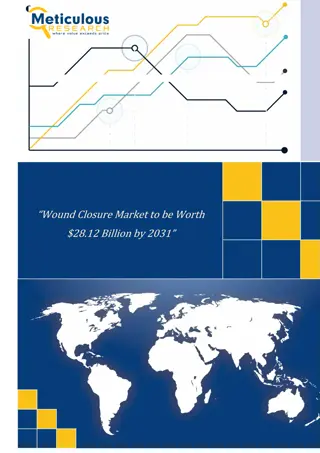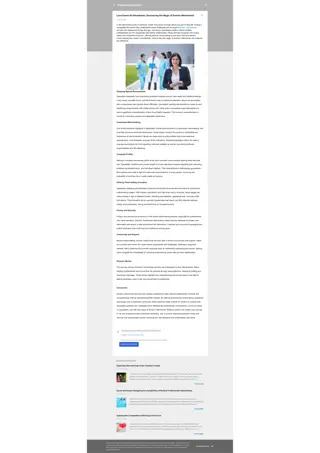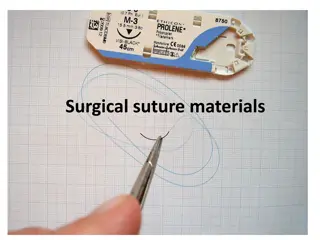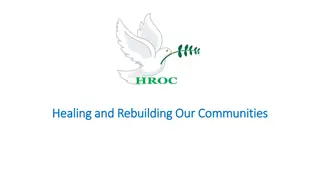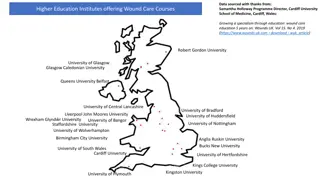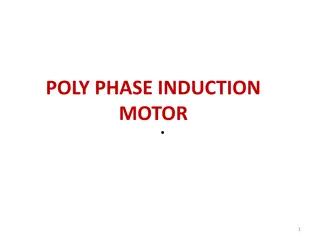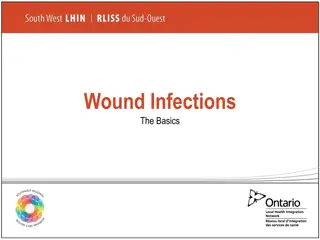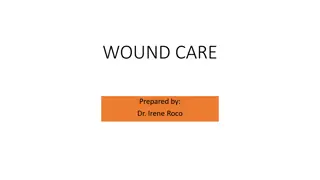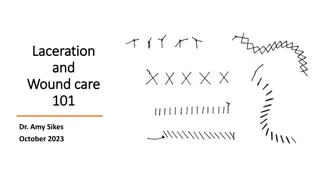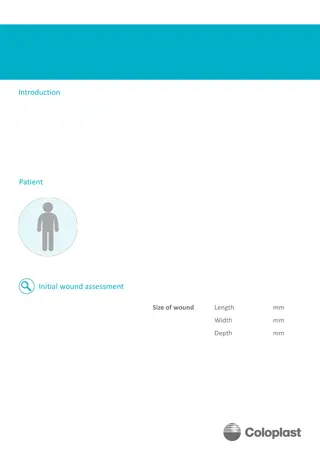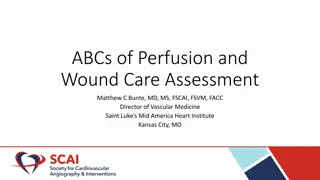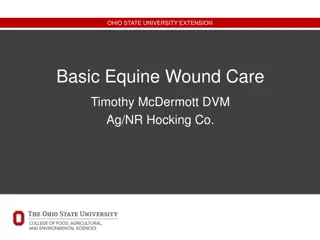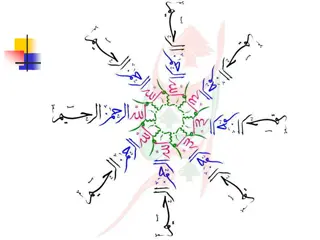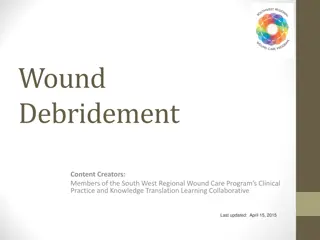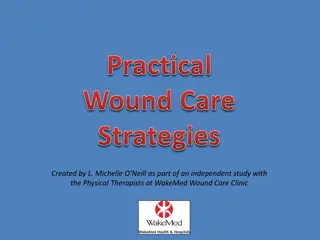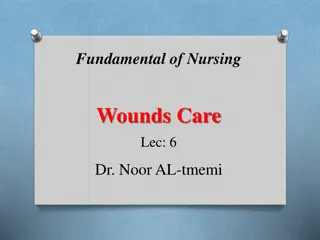Understanding Wound Healing Processes
The body's response to injury involves two main processes of wound healing - regeneration and repair. Regeneration involves proliferation of parenchymatous cells, while repair results in fibrosis and scarring by proliferation of connective tissue. Different types of cells play varying roles in the healing process, such as labile cells with active replacement, stable cells with good regenerative capabilities, and permanent cells unable to regenerate. Wound healing can occur by first intention (primary union) or second intention (secondary union), each with its own characteristics and outcomes.
Download Presentation

Please find below an Image/Link to download the presentation.
The content on the website is provided AS IS for your information and personal use only. It may not be sold, licensed, or shared on other websites without obtaining consent from the author. Download presentation by click this link. If you encounter any issues during the download, it is possible that the publisher has removed the file from their server.
E N D
Presentation Transcript
Wound Healing -1 Dr Versha Prasad
Healing Healing is the body response to injury in an attempts to restore normal structure and function. There are two processes of healing i) Regeneration Ii) Healing-Repair
Regeneration Healing by proliferation of parenchymatous cells. In wound healing ,the restoration of epithelial surface of the skin is effected by movement and proliferation of of epithelial cells. The capacity to regenerate is related to the amount of proliferation and replacement. Tissue replaced by same type of tissue. Regeneration requires intact connective tissue. No distortion or complication.
There are 3 broad groups of cells 1. Labile Cells 2. Stable Cells 3. Permanent Cells
Labile Cells Normally a continuous process of active replacement is occurring The chances of restoration by regeneration is excellent. For Example; The covering epithelium, bone marrow cells & lymphoid cells etc.
Stable Cells Although normally the replacement requirements are minimal. They have not loosed the capacity to proliferate in response to damage . Chances of regeneration are good. For example: Liver, endocrine glands and renal tubular epithelium etc.
Permanent Cells Permanent cells are normally unable to multiply after growth phase early in life. Such cells can not regenerate. Healing is by granulation tissue with permanent loss of function For example : Nerve cells.
Repair Healing by proliferation of connective tissue results in fibrosis and scarring. Tissue replaced by scar ( fibrous ) tissue. The process consists of both regeneration and healing. Destruction of connective causing fibrosis and scarring. Complication due to scar formation is very common.
Wound Healing Wound healing of skin is of two types 1. Wound healing by first Intention ( Primary Union) 2. Wound healing by Secondary Intention(Secondary Union)
Wound Healing by First Intention ( Primary Union) This occurs in: Clean and Uninfected wound. Surgically incised wound Without much loss of cells and tissues Edges of the wound are approximated by surgical sutures.
Stages of Wound Healing by Primary Union 1. Immediate Hemorrhage: After injury , the incised wound is filled with blood which then clots and seals the wound against dehydration and infection. 2. Acute inflammatory response: It occurs within 24 hrs. Mild hyperemia and polymorphs are present. 3. By 2-3 Days: Macrophages replaces the polymorphs. 4,. Epithelial Changes: The basal cells of epidermis forms both the cut margins starts proliferating. A well approximated wound is covered by layers of epithelium in 48 hrs.
Stages of Wound Healing by Primary Union 5. Organization: On the 3rdday fibroblast also invade the wound area and by 5thday new collagen fibrils starts forming and with in 10-14thdays scab looses. After months and years DE vascularization. Remodeling of collagen by enzymatic action. Scar is now minimal and merges with surrounding tissues.



